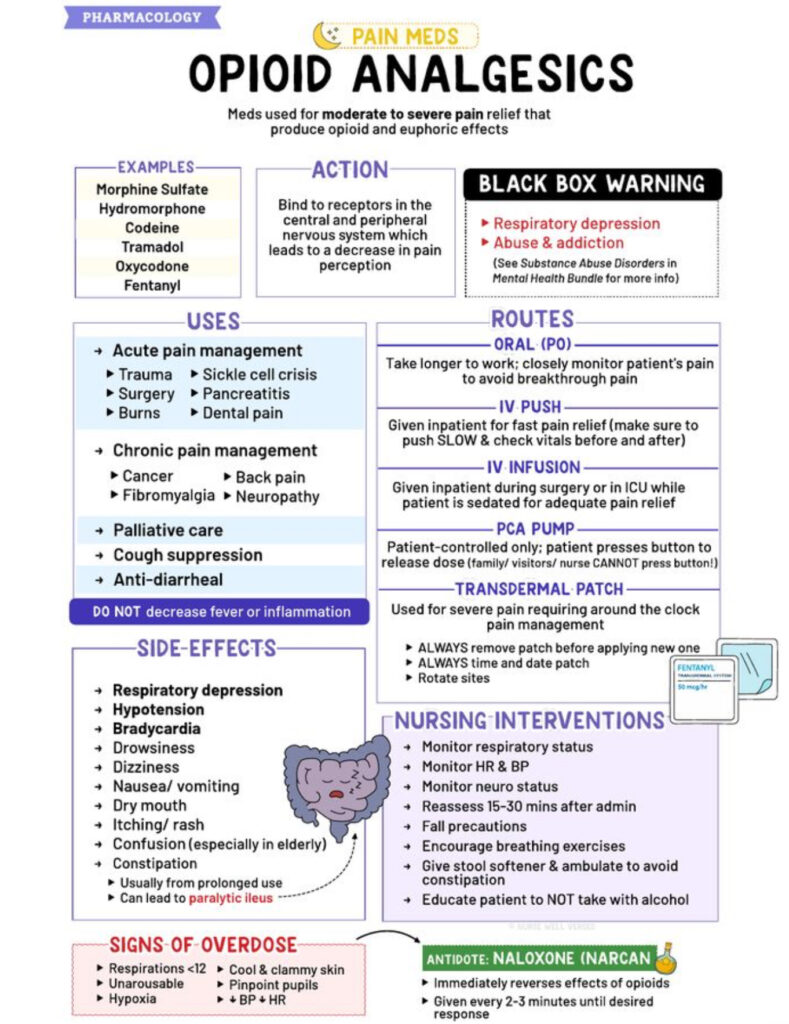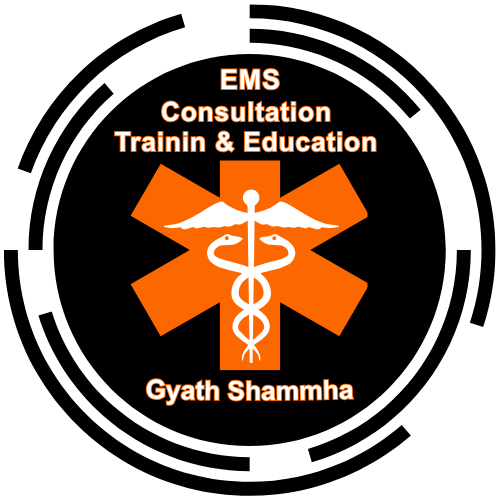Opioid analgesics are among the most potent medications available for managing moderate to severe pain. Often prescribed after surgeries, injuries, or for chronic pain conditions, these drugs provide essential relief — but they come with serious risks if not used carefully.
In this post, we’ll break down everything you need to know about opioids, from how they work to signs of overdose and life-saving antidotes.
💊 What Are Opioid Analgesics?
Opioids work by binding to receptors in the brain and spinal cord (central and peripheral nervous systems), altering the way your body perceives pain. This action not only relieves pain but can also create feelings of euphoria — a major reason why opioids have a high potential for abuse.
🔍 Common Examples:
- Morphine Sulfate
- Hydromorphone
- Codeine
- Tramadol
- Oxycodone
- Fentanyl
🩺 When Are Opioids Used?
✅
Acute Pain Management
Used for short-term relief in conditions like:
- Trauma
- Surgery
- Burns
- Dental procedures
- Sickle cell crisis
- Pancreatitis
✅
Chronic Pain Management
Prescribed for long-term issues such as:
- Cancer
- Neuropathy
- Fibromyalgia
- Back pain
✅
Other Uses
- Palliative care
- Severe cough (Codeine)
- Diarrhea (as an anti-diarrheal)
🔵 Note: Opioids do NOT reduce inflammation or fever.
🚨 Black Box Warning: Handle With Caution
Opioids carry the FDA’s strictest warning due to:
- Respiratory depression (slowed breathing, potentially fatal)
- High risk of abuse and addiction
💉 Routes of Administration
- Oral (PO) – Slower onset; monitor for breakthrough pain
- IV Push – Quick relief; must be administered slowly with vital checks
- IV Infusion – For sedated or ICU patients
- PCA Pump – Patient-controlled; only the patient can press the dose button
- Transdermal Patch – For chronic, round-the-clock pain relief
- Always rotate sites, date patches, and remove the old one before applying a new
⚠️ Side Effects
Opioids come with a host of side effects:
- Respiratory depression
- Hypotension
- Bradycardia
- Drowsiness & dizziness
- Nausea & vomiting
- Itching or rash
- Dry mouth
- Constipation (can lead to paralytic ileus)
- Confusion, especially in elderly patients
🚑 Recognizing an Overdose
Immediate signs:
- Respirations <12/min
- Unresponsiveness
- Pinpoint pupils
- Hypoxia (low oxygen levels)
- Cool, clammy skin
- Low blood pressure and heart rate
💉 The Antidote: Naloxone (Narcan)
Naloxone is a life-saving drug that rapidly reverses opioid effects. It can be administered every 2–3 minutes until the patient responds. Always call emergency services even after giving Narcan.
👩⚕️ Nursing Interventions & Safety Tips
If you’re a healthcare provider or caregiver:
- Monitor respiratory rate, heart rate, and blood pressure
- Assess neurological status
- Reassess 15–30 minutes post-administration
- Encourage breathing exercises
- Prevent constipation with softeners and movement
- Never mix with alcohol
- Educate patients and family about overdose risks and safe storage
Final Thoughts
Opioid analgesics are powerful tools in pain management — but with great power comes great responsibility. Whether you’re a patient, nurse, or caregiver, knowing how these medications work and how to use them safely can save lives.
Stay informed. Stay safe.

